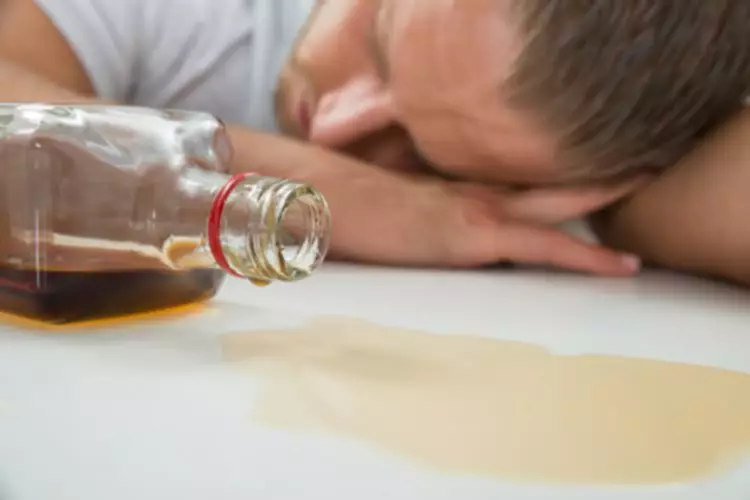
Our caring and dedicated staff use personalized treatment plans and Substance abuse a wide range of therapies to ensure optimal success. If you are serious about addiction recovery, reach out to Avenues Recovery today to start your journey! We will support you every step of the way towards the sober future you deserve. Long-term alcohol consumption can cause significant damage to the liver, a crucial organ responsible for detoxifying the body. One of the most apparent signs of liver damage is a yellowish tone on the skin and eyes , a condition known as jaundice.
Facial Redness and Flushing
Weight fluctuations, both gains or losses, are also common due to the empty calories in alcohol and its effects on appetite. In the late stages of alcoholism, the physical and psychological toll becomes increasingly severe. Individuals may display a loss of interest in previously important aspects of their life, isolation from loved ones, and an inability to function without alcohol. Severe liver damage, cirrhosis, and organ failure are potential consequences of prolonged alcohol abuse in this stage, and immediate intervention is crucial. In addition to liver damage, alcoholism can also have detrimental effects on the cardiovascular system. Excessive alcohol consumption can lead to high blood pressure, irregular heart rhythms, and an increased risk of heart disease.

How Can Facial Features Indicate an Alcohol Problem?

It’s also worth noting that excessive alcohol can also irritate the blood vessels in the eyes, resulting in bloodshot or red eyes. This is why bloodshot/red eyes commonly occur when someone has a hangover. Alcohol abuse can have serious consequences on the body, including damage to the liver. This damage can lead to a build-up of bile in the bloodstream, causing a condition known as jaundice.

Poor Skin
- Without these key nutrients, hair may become dry, brittle, and prone to breakage or thinning.
- The best ways to support and heal your body include drinking water daily, eating well-balanced meals rich in vitamins and nutrients, and regularly exercising.
- Our caring and dedicated staff use personalized treatment plans and a wide range of therapies to ensure optimal success.
- Functional alcoholic signs are sometimes difficult to identify, meaning that alcohol misuse is left untreated until things get worse.
- Recognizing alcoholic face is not just about observing physical changes; it also involves paying attention to behavioral and emotional cues that may indicate alcohol abuse.
- Alcohol can also make you feel hungry and overeating can contribute to further weight gain.
Seeking help doesn’t only involve physical recovery—it’s also about mental well-being, emotional health, and a supportive network. The terms alcoholic and addiction are usually used to separate someone specifically with an alcohol use disorder (AUD) from someone with a broader substance use disorder (SUD), including alcohol. Despite its legality, alcohol is still a drug and can lead to physical dependency and cause the body to experience potentially fatal withdrawal symptoms if someone suddenly stops drinking. Alcoholics and addicts are both drawn to substances like alcohol or opioids because of their mood-lifting and physical or emotional pain-relieving effects.
Seek Treatment
By understanding the physiological and psychological effects of alcohol abuse, we https://ecosoberhouse.com/ can offer support and assistance to those in need. Preventing alcoholic face begins with promoting a culture of moderation and responsible drinking. Encourage individuals to be mindful of their alcohol consumption and to seek help if they feel their drinking habits are becoming problematic. The term “alcoholic face” is not merely anecdotal; it has a scientific basis rooted in the physiological effects of alcohol on the body. This occurs when the body is challenged to completely digest the excessive amount consumed, causing the toxins like “acetaldehyde” to accumulate in the body.
- Treatment and recovery are possible, and understanding these signs is the first step towards helping someone overcome their addiction.
- You’re probably not looking to call out or judge a loved one, but catching signs of addiction at any stage can lead to healthy and positive changes.
- According to their article, this deficiency can result in premature aging signs, such as the development of fine lines, wrinkles, and age spots, making the skin appear older and less vibrant.
Let’s delve into the science behind the “alcoholic face” and learn its key indicators. By becoming more aware of these signs, we can better understand the detrimental impact of alcohol on our body and take proactive steps towards healthier living. A drinker’s alcoholic physical appearance face often refers to facial redness or broken blood vessels caused by chronic alcohol consumption. It may be a common physical sign, but it is not a definitive indicator of alcoholism, as other factors may also contribute to these symptoms.

Feeling the need to have a drink first in the morning can be a result of other symptoms of alcohol use disorder. Some may drink because they wake up with cravings for their beverage of choice. Some people have lost control over their drinking altogether and have a drink because they cannot control when and how much they drink. For instance, dark circles under the eyes can stem from lack of sleep or illness and appearing hungover may stem from a one-off night of excessive drinking rather than alcohol addiction. But it’s worth noting that weight changes don’t necessarily mean someone has an alcohol addiction.
- With the right knowledge, it can offer clues about a person’s self-care and lifestyle choices.
- With the right help and support, individuals struggling with alcoholism can regain control of their lives and achieve long-term sobriety.
- Those who have a history of misuse of alcohol can go on to lead healthy, fulfilling lives in recovery.
While specific facial traits are often linked to chronic alcohol use, they are not conclusive indicators of alcoholism on their own. For example, dark circles under the eyes might result from sleep deprivation or health issues, and occasional signs of being hungover could be due to sporadic heavy drinking rather than an addiction. Similarly, spider veins could arise from aging, sun damage, or climate rather than alcohol intake. By adopting a holistic approach, a fuller understanding can be achieved, facilitating the identification of those in need of help and guiding them toward suitable support and recovery options.
By addressing alcohol abuse, you can restore your health, vitality, and natural good looks. Take the first step today toward reclaiming your appearance and your life. Furthermore, nutritional deficiencies from excessive drinking deprive the skin of vital nutrients, exacerbating redness, inflammation, and other unsightly issues. A 2019 study from the University of Missouri found that participants could accurately perceive alcohol consumption levels simply from looking at facial photos. Those with an alcohol use disorder showed more facial aging, distinct blood vessel patterns, and swelling.

Recent Comments